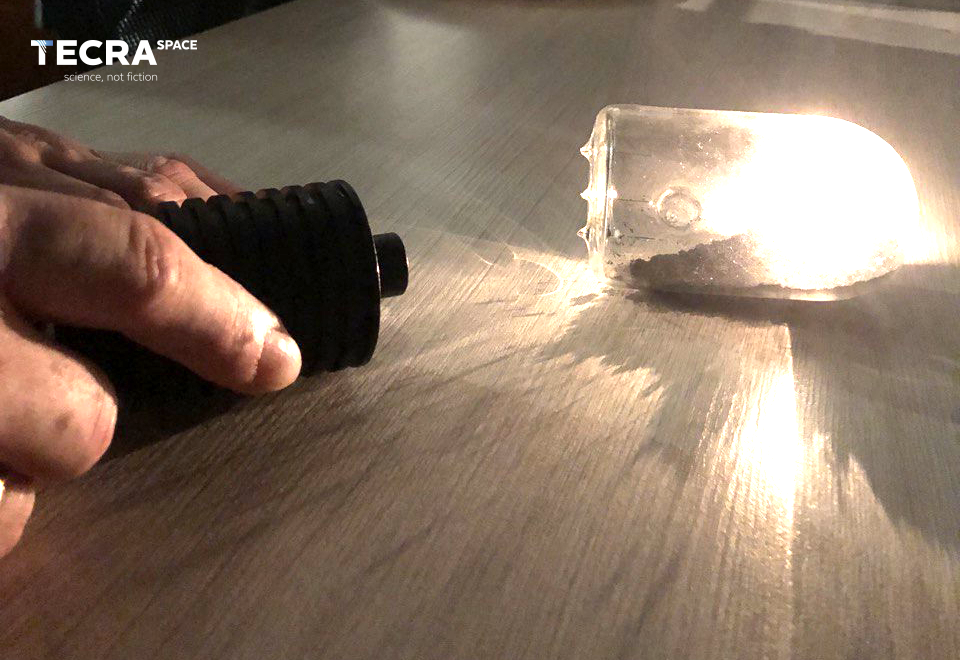Graphene light is one of the first components that make up Tecra’s vision. Our main values are sustainable development and finding new solutions that are good for people, as well as the environment. Not only is the graphene light bulb project consistent with Tecra’s ideals, it also is expected to have high efficiency and high commercial value. Graphene, as a highly conductive material, can be used to dissipate heat. That feature applied in light bulbs makes them simultaneously brighter and much efficient. Graphene light bulbs can also be characterised by a significantly longer lifespan than other types of light bulbs (up to 35 years!).
What makes our project different?
This specific model of a light bulb is an original and state-of-the-art solution for various reasons. Despite the small size and lower wattage, the bulb is exceptionally light efficient. The light bulb’s prototype has the potential of becoming the leading edge in the industry owing to the combination of the model's innovative design and its unprecedented functionality. Our specialists are continuously working on improving the model, as well as finding new solutions to any possible obstacles to implement the project in the best way possible.
The prototype is created by Mirca Design company, with Damian Mierzwa - design manager and Marzena Ewiak - project manager.
 Progress
Progress
In the process of model manufacturing, especially for such a small-sized light bulb, precision is vital. There are plans for the implementation of a dedicated laser system with lenses that aim to shorten the optical path length and with a stronger laser (at least 1000mW). It will help to make graphene a viable light source and will downscale the size of the prototype.
Our scientists’ priority is ensuring the product is effective and that the prototype’s size is as small as possible (up to 24,5 cm). They are also working on obtaining the most cost-optimal materials for the time of the project's commercialization. The primary findings suggest that the most optimal infrared laser wavelengths for a graphene light bulb are 808 nm and 975 nm. The minimal laser power should stand at least 2W. Two biconvex lenses should be installed in the laser in order to shorten the optical path, as well as laser diodes, which are an efficient and inexpensive source of light. In addition to the aforementioned elements, the following will also be required: powerpack, controller (PCBA assembly), laser diode controller and GU10 base (cap). Due to the project’s innovation we decided to test out which technical conditions will be the most optimal for the graphene. That’s why we are in the process of manufacturing the dedicated electronics for the prototype. The estimation of lasers’ wavelengths and laser’s power are currently in the research phase, which is under supervision by Wojciech Faliński of the AMECAM company.
The challenges that our developing scientists are currently facing include attaining a state of vacuum in the prototype, as well as potential overheating of the bulb as a result of the diode’s activity. Hence the scientists are currently researching the heat dissipation methods and finding the best possible solution to occurring problems. Most probably a radiator with natural convection will be installed. Another challenge that the experts are overcoming is minimising the risk of the infrared beam getting out of the case - visible light needs to be let through, and the high intensity infrared laser radiation that could potentially harm eyesight needs to be stopped.
The scientists are researching the possible installation of a transparent glass or plastic filter on the bulb’s opening. The filter would let the visible light through and diminish the laser radiation to a safe level (diminish it by 1000 times, down to 1mW, which is an equivalent of optical density of 3). For the 808 nm wavelength we are considering using a japanese product called Matsunami Glass or a Schott company’s 2mm KG3 or KG5 type glass. When it comes to plastic filters we are considering the use of polycarbonates to filter the infrared in military applications. Kopp Glass company’s 7062 type glass has been rejected due to a low light transmittance in the visible spectrum.
According to our scientists, the electronics components should pass the development stage by the end of October. The provisionally considered light bulb model is cylindrical in shape.
If you want to read more about the project, click here.

 50 032 624
50 032 624














